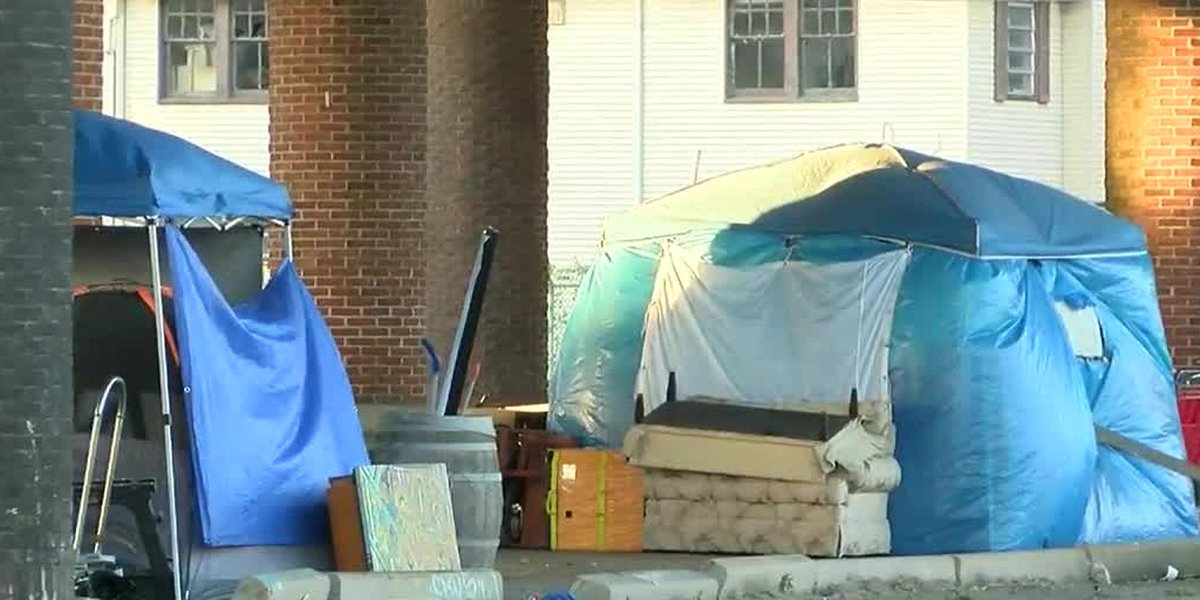NEW ORLEANS (WVUE) – City and state leaders held a community meeting Wednesday evening to discuss the growing homeless enclave under the I-10 overpass in Treme.
The meeting was chaired by Councilmen Eugene Green and Freddie King and was attended by various city and state leaders and State Representative Royce Duplessis.
“It needs to be a total change of attitude in how we deal with homelessness in this city,” said one resident.
“Many people beg our customers, beg with their hands out and walk over us in our locked cars,” said another local business owner.
A large homeless encampment can be seen under the I-10 overpass in the middle of Claiborne Avenue. Residents and business owners expressed their frustration that they or their customers are constantly being harassed, having to step over discarded needles and other waste.
“We need to know what you all can do to make our place safer,” said Louis Charbonnet, owner of Charbonnet Funeral Home, which has operated in Treme since 1883.
Charbonnet held the meeting at his business, and about 60 people attended.
“This is the oldest African-American subdivision in the country. Treme is the oldest black neighborhood in the country,” Charbonnet said. “It has significance. We can’t just let it go.
After the city cleared the abandoned Baywater Marine Corps Camp in July, the area’s homeless population exploded.
“We have harassment. People are coming and controlling everyone here. Everyone they see asks them for money. The smell, the stench, it’s not a clean-smelling neighborhood now, you can smell it,” Charbonnet said.
Charbonnet said he and other local business owners have an agreement with the state that allows customers to park in the parking lot below the overpass. A Louisiana Department of Transportation Development (DOTD) representative said the agreement would allow the business owners to fence off the area, a solution that was also discussed by city council members.
One of the topics discussed at the meeting was the bureaucracy of local homelessness and the challenges that come with solving it.
“There really seems to be no one in charge,” Duplessis said. “There seems to be some level of shared responsibility for everybody who wants to try and do something about this, but there’s no real accountability in this case.”
Duplessis asked a representative with DOTD if a local entity could participate in maintaining the area under the overpass, which is technically state property, while maintaining public access.
The representative pointed to the previous agreement and said that most of the area is shared with the city.
In the year In 2018, the US Supreme Court ruled in Martin v. Boyce, a ruling that made it difficult for municipalities and states to enforce anti-camping laws to house all homeless people removed from public property if there are not enough beds locally. .
Martin v. Boise makes it difficult for both the city and the state to enter and completely remove the settlement.
When asked if the state could cordon off the area, a DOTD representative said the state has several similar requests statewide and it would be cost prohibitive.
“It’s really hurting my business. I am not, as a national corporation did two weeks ago. [able to] Just shut up and get out,” Charbonnet said. “I’ve been here since 1883. I can’t move.”
See a spelling or grammar mistake in our story? Click here to report. Please include the title.
Copyright 2022 WVUE. all rights reserved.





